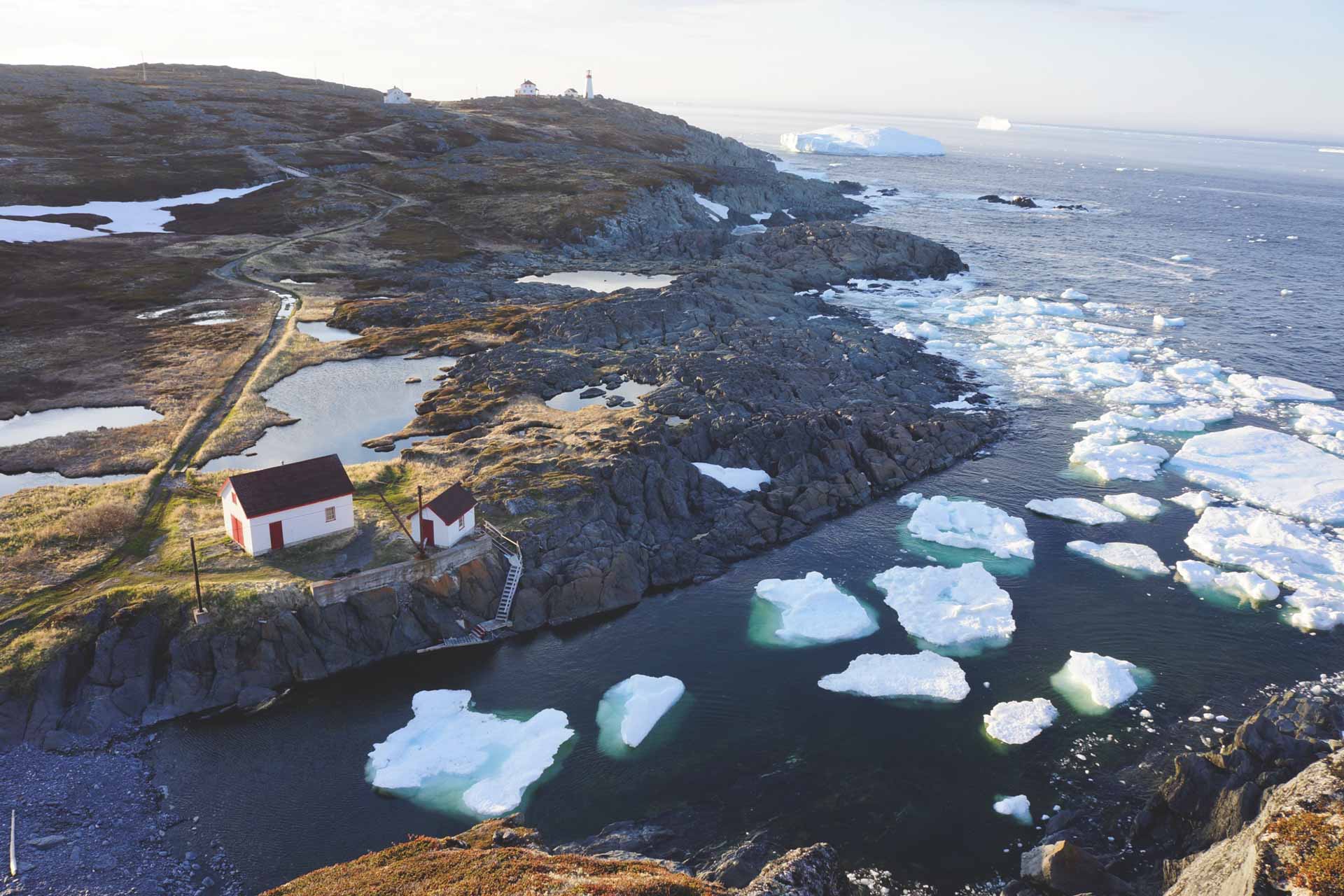Overview
An Epic Journey
Icebergs calve in Greenland, a thousand miles north of our Inn’s location. As they drift south on the Labrador current, they enter ‘Iceberg Alley’, which extends along the coast of Newfoundland. Any of the bays and coves along the north coast of the island can play host to these ice giants. Up to several thousand can reach Newfoundland waters, starting in the north at Quirpon Island. The rest are lost by diversion into straits and bays, by being grounded in the many fjords along Baffin Island, and by deterioration.
As the summer progresses, icebergs that have found their way to southern waters melt more rapidly, but the further north you venture on the island of Newfoundland, the more likely you are to find ‘bergs, especially after mid-July. While June is considered the best month for iceberg viewing, the colder waters of the north can play host to the impressive structures until well into September. In fact, photographers from international magazines have shot icebergs off Quirpon Island right into October, so your odds of an awesome icy encounter are very good indeed!
There are often dozens in view from the lighthouse, and often a few resting in our coves, making iceberg spotting from land a breeze. That said, there is nothing like kayaking out to visit one up close and personal! No experience is necessary for an adventure that never fails to be labeled “one of the most amazing things I have done in my life” by those who have taken to the sea with our experienced guide. Add in 100-ton whales surfacing nearby and you have pretty much the perfect day!
Formation
Anatomy of an Iceberg
Icebergs are nothing more than solid water. They float because the density of the ice is less than the density of seawater. They come in all shapes and sizes and have been compared to mountains, pyramids and castles. Kind of like the clouds above, icebergs are molded into unusual and fascinating shapes that stimulate the imagination, wind and waves acting as nature’s great sculptors.
Icebergs are formed in both the Arctic and Antarctic Oceans. Arctic icebergs hail mainly from Greenland – a huge island that is almost completely covered by a giant, sprawling sheet of ice. It is estimated that the Greenland ice cap produces from 10- to 30,000 icebergs each year.
The course of an iceberg cannot be judged by wind direction alone. Since nine-tenths of an iceberg’s mass lies underwater, much more of a ‘berg’s surface is affected by water currents than by wind. The route an iceberg takes is ultimately decided by a combination of wind and water currents. These mighty, moving masses of ice can move across the wind, as well as downward and at small angles to it! This makes an iceberg’s path difficult to predict, and has caused operators in ocean industries to develop immensely complex systems including satellite imaging, sensor technology, and remotely operated vehicles to protect their at-sea assets. They will often need to physically tow an iceberg with a tugboat to avert a collision with an at-sea structure!
Bergy Bits
Interesting Facts and Figures
The frozen water that makes an iceberg is fresh water.
The drift of icebergs from Greenland to Newfoundland is about 1,600 nautical miles and takes an average of two to three years.
Arctic icebergs have reached as far south as the island of Bermuda, a journey of 2,500 miles. An Antarctic iceberg has reached almost as far north as Rio de Janeiro, a journey of 3,440 miles.
The temperature inside an iceberg is around -15°C. At the surface the temperature is about 0°C.The ice that makes up an iceberg is believed to be at least 12,000 years old.
The biggest iceberg ever recorded was 208 miles long and 60 miles wide, a total of 12,000 square miles – larger than Belgium. The tallest iceberg ever recorded was 550 feet, just over half the height of the Eiffel Tower in Paris.
The International Ice Patrol, which tracks the movement of icebergs, was formed as a result of the Titanic sinking in 1912.
Types and Sizes
How Icebergs are Classified
A large, tabular iceberg, 100-200 metres long, is as big as an oilrig.
A medium iceberg, 50-100 metres long, is as big as an ocean-going ship.
A small iceberg, 15-50 metres long, is as big as a long liner.
A bergy bit, 5-15 metres long, is as big as a single family house.
A growler, less than 5 metres long, is as big as a standard grand piano.

